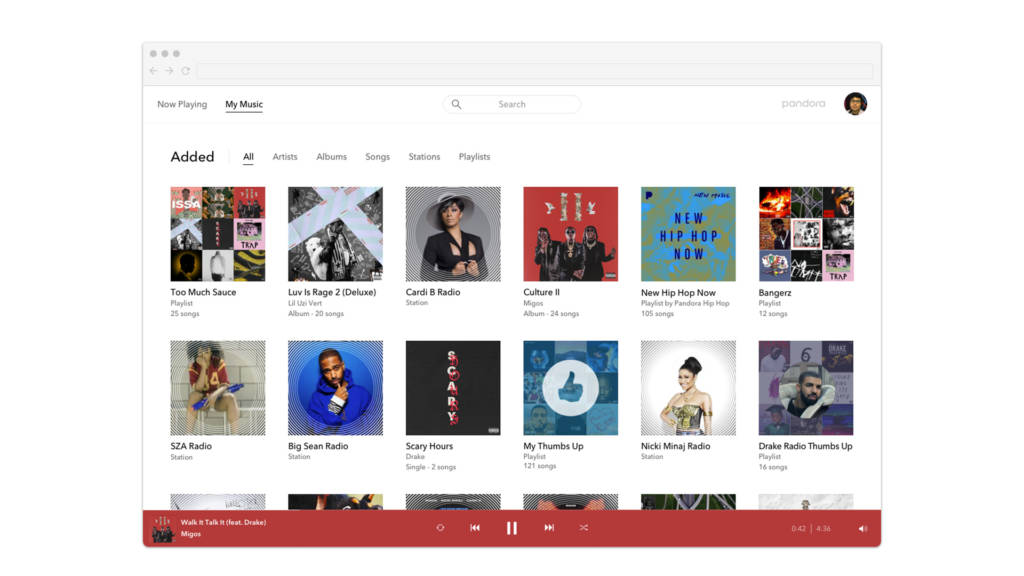Pandora Premium is now available on the web for the first time, creating additional competition for Spotify, Pandora’s closest competitor, which is planning its IPO this year.
After a year of offering Pandora Premium on Android and iOS devices, Google Chromecast and select vehicles, streaming music service Pandora quietly launched access via the web. The Pandora Premium web app allows its subscribers to search for songs, albums, stations or playlists on demand as well as create playlists for offline listening.
This move is a timely one for Pandora in its efforts to attract more paid subscriptions. Spotify currently has 70 million paying subscribers, dwarfing Pandora’s 1 million as of the third quarter.
What Pandora lacks in paid subscribers, it makes up for in active listeners. A recent survey by Fluent found that US respondents between the ages of 18-24 and 25-34 choose Pandora as their preferred music streaming service, second only to YouTube. Spotify was further down the list behind iHeartRadio and Google Play Music.
In the company’s fourth quarter call to investors, Pandora CEO Roger Lynch said that US consumers spend more time on the app than any other digital platform in the country.
However, Pandora’s user base declined over the quarter and the company expressed disappointment in ad revenue. The company outlined plans to invest in its free, ad-supported tier with features such as “sponsored listening” to compete with services like YouTube and Vevo.
The music streaming market is on the rise, accounting for more than half of the US music industry’s revenue in 2017. According to the Recording Industry Association of America (RIAA), revenue from paid subscriptions to services like Pandora and Spotify grew 61 percent in the first half of 2017.
While ad-supported music streams earned $273 million, paid subscribers brought in $2.4 billion—making the benefit of promoting paid subscription plans an obvious one.

